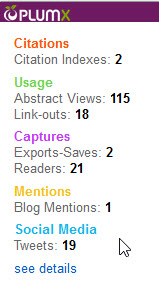Introduction
Research is depicted as a life cycle with three stages of preparation, research and development, and results or output stage (see Jisc full image here). From research ideas through to publication, there are many touch points where social media can offer unique opportunities to present new content (Rogers, 2019). Participating in social media can create virtual communities where sharing, creating and exchange of ideas and information happens. Sharing your ideas and research can help spark ideas for others. From the starting point of new ideas, discovering research, promoting research output, staying visible, and current, social media can help!
In Slide 13 of this presentation the author, Anand Sheombar, uses the JISC Research Life Cycle to depict how social media can be used at different stages in the life cycle. A reflection of this topic with 2019 data is available here.
A wide variety of applications can be used including, Facebook, YouTube, WhatsApp and Twitter. Some of the perceived benefits of using social media in research include communicating internationally, faster dissemination, connect with people outside the academy and ability to cross disciplinary divides (Rowlands et al, 2011). There are more scholarly sites like Academia and ResearchGate which will be discussed more below. Take a look at the activities under ‘Try’ and then share with the 23 Things community about your discoveries using social media.
Try
- Review Thing 5 in relation to using Twitter. Find and follow one of these research based organisations @cdu_ni, @MenziesResearch, @RIELresearch (10 minutes)
- Find a University research portal and find a paper of interest (20 minutes)
CDU’s Research Web Portal https://researchers.cdu.edu.au/en/ - Find altmetrics for research articles. For CDU staff and students: From the Library A-Z of Databases, enter the Academic Search Premier. Search for articles in your field of interest and identify any articles that has five entries for PlumX Metrics. (20-40 minutes)
Example:

More Detail
Using social media tools leaves a trail of numbers. Altmetrics (alternative metrics) is the term used to describe how these numbers can be used for analysing and informing scholarship. One of the applications available for altmetrics is Impactstory which promises to ‘discover the online impact of your research’.
On the Charles Darwin University library site, PlumX Metrics can be seen in some databases. A five pointer symbol ![]() is used to indicate the metrics captures on different articles. This feature is used in the Try activity.
is used to indicate the metrics captures on different articles. This feature is used in the Try activity.
Academia.edu is a social network for academics and researchers. It can be used for promoting and sharing publications through the network and monitoring their impact. It promotes open science and provides altmetrics for publications. Jayshree Mamtora co-wrote this post and has provided her academia profile for example.
ResearchGate.net is a social networking site for scientists and researchers and is often described as a scholarly Facebook site. You can upload research papers and publications to share with others, and follow the research activities of others. It provides statistics on uploads and views.
Twitter is a microblogging and social networking site which allows messages of up to 280 characters. This can be used to promote research output and connect with other researchers online. All Tweets are public, therefore it is wise to behave professionally, always consider confidentiality and be prepared for vigorous discussion. Here is an example from Jenny Davis in dissemination of a research paper available online before it is printed in the journal. If you see the thread or conversation, Wendy asked permission before embedding it here, as a courtesy and a way of connecting with the researcher.
Woo hoo – our paper on Australian arid zone waterholes is now available as early online :
Microbial diversity and distribution differ between water column and biofilm assemblages in arid-land waterbodies | Freshwater Science: Ahead of Print https://t.co/98YytuPTS6— Jenny Davis (@waterpenny10) September 25, 2019
Other applications include:
Blogging the research process: Google Blogger, WordPress, Yammer.
Find partners and collaboration: Facebook, LinkedIn
Collaborate and disseminate published articles: Google Docs, Mendeley, Open Science Framework
Share
In the comments below, share one thing that you could put into place to benefit from social media for your research area. Share a story of how you have benefited from using social media at any stage in the research life cycle.
Reminder: Track your Professional Development with this form. Record of evidence form
References and more reading
Cann, L., Dmitriou, K. & Hooley, T. (2011). Social media: a guide for researchers. Retrieved from https://www.researchgate.net/publication/261990960_Social_Media_A_Guide_for_ Researchers
Duque, L. (2016). How academics and researchers can get more out of social media. Retrieved from https://hbr.org/2016/06/how-academics-and-researchers-can-get-more-out-of-social-media
Goodier, S. & Czerniewicz, L. (2015). Academics’ online presence: a four-step guide to taking control of your visibility. Retrieved from https://open.uct.ac.za/handle/11427/2652
Rogers, J. (2019). The Use of Social Media and its Impact for Research. BioResources, 14(3), 5022-5024.
Sheombar, A. (2015). Social Media for Research Communication. Retrieved from https://www.slideshare.net/anandsheombar/social-media-for-research-communication
University College London. Institute of Education (2019). Social media for researchers. Retrieved from https://libguides.ioe.ac.uk/socialmedia
Rowlands, I., Nicholas, D., Russell, B., Canty, N., & Watkinson, A. (2011). Social media use in the research workflow. Learned Publishing, 24(3), 183-195. doi:10.1087/20110306
Photo by Ian Schneider on Unsplash
Thing 18 was written by Jayshree Mamtora and Wendy Taleo


